Crankshaft manufacturer
When we talk about the heart of an internal combustion engine, we are invariably referring to the crankshaft. This marvel of engineering is responsible for converting the linear motion of the pistons into rotational motion, which then powers everything from automobiles and marine vessels to industrial machinery and power generators. To be honest, without a high-quality crankshaft, the entire engine simply wouldn't function. This brings us to the pivotal role of a crankshaft manufacturer. These specialized entities are the backbone of countless industries, providing the critical component that drives progress. But what exactly goes into being a leading crankshaft manufacturer, and why is their expertise so vital?
The Core Role of a Crankshaft Manufacturer in the Automotive and Industrial Sectors
A crankshaft manufacturer is not just a parts supplier; they are a precision engineering powerhouse. Their primary function is to design, produce, and often customize crankshafts that meet the incredibly stringent demands of modern engines. This involves working with advanced materials, employing cutting-edge manufacturing techniques, and adhering to the tightest tolerances imaginable. The performance, longevity, and efficiency of an engine are directly tied to the quality of its crankshaft. In my experience, many experts agree that the crankshaft is arguably the most stressed component within an engine, enduring immense forces and high temperatures.
The scope of a crankshaft manufacturer extends far beyond just cars. They cater to a vast array of sectors, including heavy-duty trucks, agricultural machinery, marine engines, aerospace applications, and even power generation plants. Each sector presents unique challenges and requirements, demanding a manufacturer with deep technical knowledge and adaptability. For instance, a crankshaft for a Formula 1 racing car will have vastly different specifications than one designed for a massive ship engine, yet both require absolute precision and reliability. How does a single entity manage such diverse demands while maintaining peak quality? It's a testament to their specialized focus and relentless pursuit of engineering excellence.
The Meticulous Process: How a Crankshaft Manufacturer Crafts Precision
The journey of a crankshaft from raw material to finished product is a complex ballet of metallurgy, machining, and meticulous quality control. It's a process that highlights the immense skill and technological investment required of any serious crankshaft manufacturer.
Material Selection and Forging
The first critical step for a crankshaft manufacturer is the selection of the right material. High-strength steel alloys, often containing chromium, molybdenum, and nickel, are typically chosen for their superior fatigue strength, wear resistance, and toughness. The most common method of forming the initial crankshaft shape is forging. This process involves heating the steel to very high temperatures and then pressing or hammering it into the desired form. Forging aligns the grain structure of the metal, significantly enhancing its strength and durability, especially in areas subjected to high stress. Interestingly enough, while casting is an alternative, forging is generally preferred by leading manufacturers for high-performance and heavy-duty applications due to the superior mechanical properties it imparts.
Advanced Machining and Grinding
Once forged, the crankshaft is still a rough component. This is where precision machining comes into play. Modern crankshaft manufacturers utilize advanced Computer Numerical Control (CNC) machines to meticulously shape the crankshaft to its exact dimensions. This includes turning the main journals and crankpins, drilling oil passages, and machining counterweights. The precision here is paramount; even microscopic deviations can lead to imbalances and premature wear. Following the initial machining, grinding operations refine the surfaces of the journals and pins to achieve extremely tight tolerances and a mirror-like finish, crucial for reducing friction and extending bearing life. Our company invests heavily in multi-axis CNC grinding machines to ensure unparalleled accuracy.
Heat Treatment and Surface Hardening
To further enhance the crankshaft's durability and wear resistance, it undergoes various heat treatment processes. Common methods include nitriding, induction hardening, or carburizing. Nitriding, for example, involves diffusing nitrogen into the surface of the steel at elevated temperatures, creating a hard, wear-resistant layer without significantly distorting the component. Induction hardening uses electromagnetic induction to heat specific areas (like journals) rapidly, followed by quenching, to create a hardened surface while maintaining a tough core. These processes are vital for ensuring the crankshaft can withstand the continuous pounding and rotational stresses it will experience throughout its operational life.
Balancing and Finishing
A perfectly balanced crankshaft is essential for smooth engine operation and longevity. Any imbalance, no matter how small, can lead to excessive vibrations, noise, and premature wear on bearings and other engine components. Crankshaft manufacturers employ sophisticated dynamic balancing machines that spin the crankshaft at high speeds to detect imbalances. Material is then strategically removed (or sometimes added) from the counterweights until the crankshaft is perfectly balanced. The final stages involve polishing, deburring, and thorough cleaning to ensure optimal surface integrity and readiness for assembly.
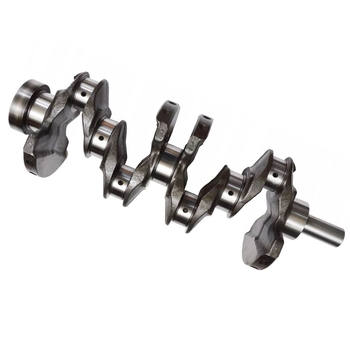
Quality Assurance and Innovation: Hallmarks of a Leading Crankshaft Manufacturer
Quality is not just a buzzword for a crankshaft manufacturer; it's an absolute necessity. Given the critical role of the crankshaft, any failure can have catastrophic consequences, both in terms of safety and economic impact. Therefore, rigorous quality assurance protocols are embedded into every stage of the manufacturing process.
Rigorous Testing and Inspection
From raw material inspection to final product verification, every crankshaft undergoes a battery of tests. Non-destructive testing (NDT) methods like magnetic particle inspection, ultrasonic testing, and eddy current testing are used to detect internal flaws, cracks, or surface imperfections that are invisible to the naked eye. Dimensional checks are performed with highly accurate Coordinate Measuring Machines (CMMs) to ensure every specification is met. Fatigue testing is also crucial, simulating years of engine operation to assess the crankshaft's endurance under extreme cyclic loads. This comprehensive approach ensures that only components meeting the highest standards leave the factory floor.
Embracing Technological Advancements
The best crankshaft manufacturers are not content with the status quo. They are constantly investing in research and development, embracing new technologies to improve efficiency, precision, and material properties. This includes advanced CAD/CAM software for design and manufacturing simulation, robotic automation for repetitive tasks, and even the exploration of additive manufacturing (3D printing) for prototyping or specialized components. The integration of AI and machine learning for predictive maintenance and process optimization is also becoming increasingly relevant, allowing manufacturers to identify potential issues before they arise and fine-tune their operations for maximum output and quality.
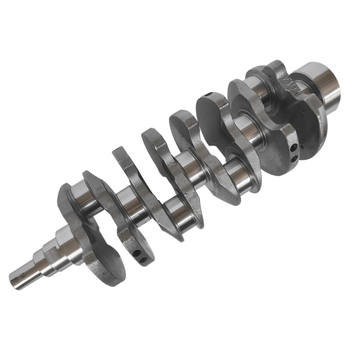
Diverse Applications and Customization by a Crankshaft Manufacturer
The versatility of a crankshaft manufacturer is evident in the sheer diversity of industries they serve and the range of products they offer. From mass-produced automotive components to highly specialized, low-volume industrial parts, their capabilities must be broad and adaptable.
Automotive and Motorsports
The automotive industry is perhaps the most visible consumer of crankshafts. Manufacturers produce millions of crankshafts annually for passenger cars, light trucks, and SUVs. This segment demands high-volume production capabilities, cost-efficiency, and consistent quality. In contrast, the motorsports sector requires bespoke, high-performance crankshafts designed to withstand extreme RPMs and power outputs, often utilizing exotic materials and specialized designs for reduced weight and increased strength. A top-tier crankshaft manufacturer can pivot between these very different demands with ease.
Marine and Heavy Industrial
Marine engines, ranging from small outboard motors to massive ship engines, rely on robust crankshafts built to withstand harsh marine environments and continuous operation. Similarly, heavy industrial applications, such as power generators, compressors, and large construction equipment, require crankshafts of immense size and strength, designed for durability and long service life under heavy loads. These applications often involve unique material specifications and larger-scale machining capabilities.
Custom Solutions and Prototyping
Beyond standard production, many crankshaft manufacturers offer custom design and prototyping services. This is invaluable for new engine development, niche applications, or when a standard part simply won't suffice. Our company prides itself on working closely with clients to develop tailored crankshaft solutions, leveraging our engineering expertise to bring their specific requirements to life, from initial concept to final production. This ability to innovate and customize is a significant differentiator in the market.
Choosing the Right Crankshaft Manufacturer: Key Considerations
For any business looking to procure crankshafts, selecting the right manufacturer is a decision that will impact product quality, supply chain reliability, and ultimately, profitability. It's worth noting that this choice should be based on more than just price.
Expertise and Experience
Look for a crankshaft manufacturer with a proven track record and extensive experience in your specific industry. Do they understand the nuances of marine engines versus automotive engines? Do they have a history of delivering on time and to specification? A manufacturer with decades of experience will have encountered and overcome a wide range of challenges, building invaluable institutional knowledge. Check their certifications (e.g., ISO standards) and client testimonials.
Capabilities and Technology
Assess their manufacturing capabilities. Do they have the necessary machinery for your required volumes and precision? What kind of quality control processes do they have in place? A manufacturer that invests in the latest technology, from advanced CNC machines to sophisticated testing equipment, is more likely to deliver superior products. Their R&D capabilities also indicate their commitment to innovation and future-proofing their offerings.
Supply Chain and Support
Consider their supply chain management. Can they ensure timely delivery, especially for large or recurring orders? What kind of after-sales support do they offer? A reliable crankshaft manufacturer will have robust logistics and a responsive customer service team ready to address any issues or provide technical assistance. Building a long-term partnership with a trustworthy manufacturer can significantly streamline your operations.

The Future Landscape for a Crankshaft Manufacturer
The automotive industry, in particular, is undergoing a transformative shift towards electrification. While this might suggest a decline in demand for internal combustion engine components, the reality is more nuanced. Hybrid vehicles still rely on crankshafts, and the global demand for traditional ICE vehicles, especially in emerging markets and heavy-duty sectors, remains substantial.
For a forward-thinking crankshaft manufacturer, the future involves adapting to these changes. This means exploring new materials that are lighter yet stronger, developing crankshafts optimized for hybrid powertrains, and potentially even diversifying into components for electric drivetrains. Sustainability will also play a growing role, with an emphasis on energy-efficient manufacturing processes and recyclable materials. Despite the evolving landscape, the fundamental need for precision-engineered rotating components will persist, ensuring that the specialized expertise of a crankshaft manufacturer remains invaluable for decades to come.
For more detailed information, please visit our official website:Crankshaft manufacturer
About the author: Dr. Alistair Finch is a veteran mechanical engineer with over 25 years of experience in powertrain component manufacturing. Specializing in advanced metallurgy and precision machining, he has consulted for leading automotive and industrial firms worldwide. His expertise lies in optimizing production processes and ensuring the highest quality standards for critical engine components. Dr. Finch is passionate about the future of manufacturing and the role of innovation in driving industry forward.
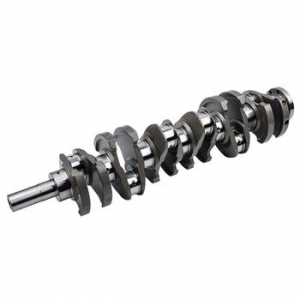 The Unseen Powerhouse: Unravel
The Unseen Powerhouse: Unravel
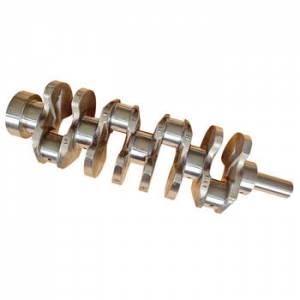 Unlocking Performance: How to
Unlocking Performance: How to
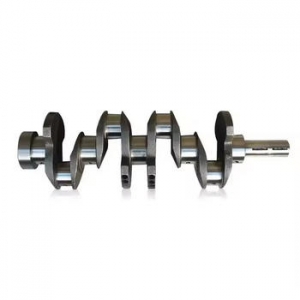 Beyond the Blueprint: A Deep D
Beyond the Blueprint: A Deep D
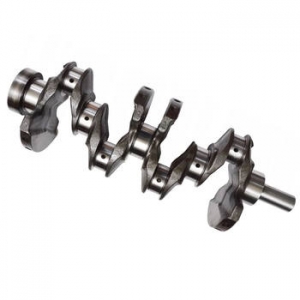 Crankshaft manufacturer
Crankshaft manufacturer
